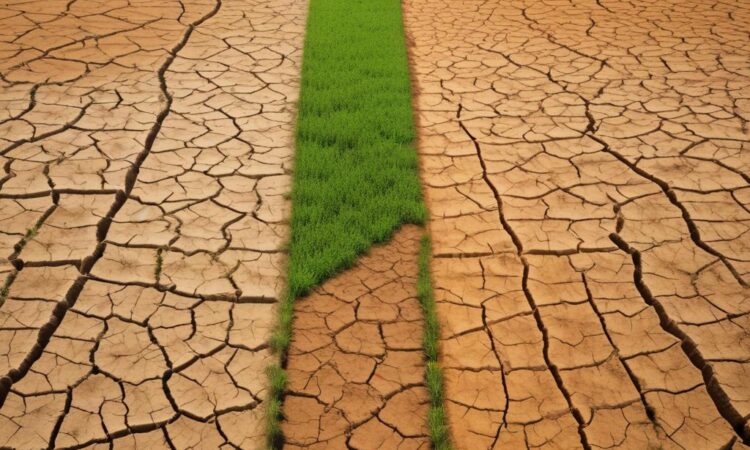The Global Food Crisis and Climate Change: An Intertwined Threat
The global food system is facing an unprecedented crisis, characterized by escalating food insecurity, price volatility, and widespread malnutrition. While numerous factors contribute to this complex challenge, climate change stands out as a significant and increasingly potent driver, exacerbating existing vulnerabilities and creating new ones. This examination delves into the intricate link between climate change and the worsening global food crisis, exploring its multifaceted impacts on food production, distribution, and access, and ultimately outlining potential strategies for enhancing food security in a rapidly changing world.
Impacts on Food Production
Climate change exerts a profound influence on agricultural productivity, the bedrock of global food security. Rising temperatures, altered precipitation patterns, increased frequency and intensity of extreme weather events (droughts, floods, heatwaves), and the spread of pests and diseases all directly affect crop yields and livestock production.
Changes in Temperature and Precipitation: Optimal temperature and rainfall ranges are crucial for most crops. Even slight deviations from these ranges can significantly reduce yields. Prolonged droughts lead to crop failure, while excessive rainfall can cause flooding and waterlogging, damaging crops and reducing soil fertility. These variations are becoming more frequent and unpredictable, making it increasingly difficult for farmers to adapt their practices.
Extreme Weather Events: Extreme weather events, amplified by climate change, inflict devastating damage on agricultural infrastructure and harvests. Cyclones, hurricanes, and typhoons can destroy entire fields in a matter of hours, wiping out months of hard work and investment. Similarly, intense heatwaves can scorch crops and reduce livestock productivity. The unpredictability of these events makes it challenging to implement effective mitigation and adaptation strategies.
Pests and Diseases: Warmer temperatures and altered rainfall patterns create more favorable conditions for the proliferation of pests and diseases that affect crops and livestock. This necessitates increased reliance on pesticides and other chemical interventions, which can have negative environmental and health consequences. The development of resilient crop varieties that can withstand these pests and diseases is a crucial area of research and development.
Ocean Acidification and Fisheries: The absorption of excess carbon dioxide by the oceans leads to ocean acidification, which harms marine ecosystems and negatively impacts fisheries. This poses a significant threat to global food security, as fish provide a crucial source of protein for billions of people.
Impacts on Food Distribution and Access
Climate change not only affects food production but also complicates food distribution and access. Damaged infrastructure, disrupted transportation networks, and increased food prices all contribute to reduced access to nutritious food, particularly for vulnerable populations.
Infrastructure Damage: Extreme weather events can severely damage transportation infrastructure, making it difficult to move food from production areas to markets and consumers. This disruption can lead to shortages, price spikes, and food waste.
Supply Chain Disruptions: Climate change-related events can disrupt global supply chains, leading to shortages of essential food commodities. This is particularly problematic for countries that rely heavily on imports for their food supply.
Increased Food Prices: Reduced crop yields, supply chain disruptions, and increased demand all contribute to higher food prices. This places an undue burden on low-income households, who may be forced to reduce their food intake or opt for less nutritious options.
Conflict and Displacement: Climate change-induced resource scarcity, such as water shortages and land degradation, can exacerbate existing conflicts and lead to displacement of populations. This further compromises food security, as displaced people often face significant challenges accessing food and other essential resources.
Enhancing Food Security: Potential Solutions
Addressing the intertwined challenges of climate change and food security requires a multifaceted approach that incorporates both mitigation and adaptation strategies. These strategies need to be tailored to specific contexts and implemented in a collaborative manner, involving governments, farmers, researchers, and international organizations.
Climate Change Mitigation: Reducing greenhouse gas emissions is crucial to limiting the severity of future climate change impacts. This requires a transition to renewable energy sources, improvements in energy efficiency, sustainable land management practices, and reductions in deforestation.
Adaptation Strategies: Farmers need to adapt their farming practices to cope with the changing climate. This can involve the adoption of drought-resistant crops, improved irrigation techniques, diversification of crops, and climate-smart agriculture practices.
Investing in Research and Development: Investing in research and development is crucial for developing climate-resilient crops, improving livestock breeds, and enhancing food storage and preservation technologies.
Strengthening Food Systems: Strengthening food systems requires improving infrastructure, enhancing supply chains, and creating more efficient and equitable food distribution networks. This also involves reducing food waste and loss throughout the supply chain.
Social Safety Nets: Implementing effective social safety nets, such as food assistance programs and cash transfers, is crucial for protecting vulnerable populations from the impacts of food insecurity.
International Cooperation: Addressing the global food crisis requires strong international cooperation. This includes sharing knowledge and technology, providing financial assistance to developing countries, and creating international agreements to reduce greenhouse gas emissions.
Empowering Women: Women play a crucial role in food production and household food security. Empowering women through access to land, credit, and education can significantly enhance their ability to adapt to climate change and improve food security for their families and communities.
The global food crisis and climate change are inextricably linked. Addressing this complex challenge requires a comprehensive and collaborative approach that integrates mitigation and adaptation strategies across all aspects of the food system. By investing in research, strengthening infrastructure, improving farming practices, and implementing effective social safety nets, we can build a more resilient and sustainable food system capable of meeting the needs of a growing global population in the face of a changing climate.
The severity of the intertwined challenges necessitates urgent and decisive action at local, national, and international levels. Delaying action will only exacerbate the crisis, leading to increased food insecurity, malnutrition, and social unrest. A concerted effort, marked by innovation, collaboration, and a commitment to equitable solutions, is essential to securing a food-secure future for all.

